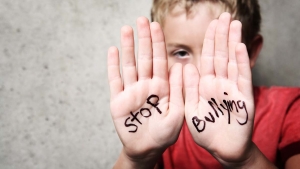5min read

5min read
What are digital footprints and how does it affect an online reputation
We have all heard of the term “digital footprints” but do we really understand what they mean? It is important that parents and carers do understand what these are so that they can in turn educate their children and help them to know what risks they might be placing themselves in when sharing information online, or just looking innocently at websites.
Whatever we are doing on the internet we can leave a trail of information behind us which people can use to determine what we might be interested in buying, or for other less savoury purposes such as trying to hack into our online accounts and trying to access passwords etc.
A digital footprint is data that is left behind when users have been online. There are two types of digital footprints which are passive and active. A passive footprint is made when information is collected from the user without the person knowing this is happening. An active digital footprint is where the user has deliberately shared information about themselves either by using social media sites or by using websites.
An example of a passive digital footprint would be where a user has been online and information has been stored on an online database. This can include where they came from, when the footprint was created and a user IP address. A footprint can also be analysed offline and can be stored in files which an administrator can access. These would include information on what that machine might have been used for, but not who had performed the actions.
An example of an active digital footprint is where a user might have logged into a site when editing or making comments such as on an online forum or a social media site. The registered name or profile can be linked to the posts that have been made and it is surprisingly easy to find out a lot about a person from the trails you leave behind.
The digital footprint we leave after browsing websites is called the internet footprint. These are commonly called “cookies” and most websites will ask you to accept the use of cookies before you can access the site, without actually knowing what this means. If we inadvertently leave a lot of information about ourselves behind it could be passively or actively collected by other people just by using a simple search engine.
It is becoming more and more common for employers to “cyber vet” prospective employees based on their online activities. Digital footprints can also be used by the police to gather information about individuals to help them with their enquiries.
Social networking sites can also give a very good idea of an individual’s life. These sites can allow digital tracing data which can include what social groups they belong to, their interests, location etc. This data can be gathered and analysed without the users being aware that this is happening.
A lot of employers will also use social media to vet prospective employees so it is important that you are mindful as to what you post on any such sites. Of course there is no limit as to how far you can go back in time on social media sites and once something is posted, there is no way of removing it completely. Others might have commented or shared your posts and this in turn will create their own digital footprint. This is something that needs to be discussed with your children and teenagers so they can be educated and are aware what might happen to that information.
Digital footprints including the meta data and content does impact on security, privacy and trust. As the internet becomes bigger and bigger it is becoming increasingly important to think about what might happen to the ownership of the photos that you own and content that you write. Remember that what goes on the internet normally stays there even if you do delete posts there will be a trail of data that you have left behind.
We hope that this has helped you understand a little more about digital footprints. We have tried to make it as simple as possible so feel free to share this with friends and family who might feel a little confused about this topic.
This article is supported by The Ben Cohen Stand Up Foundation.



Leaflet on bullying
We're here if you need to talk. Please print our poster and share with your friends, family and colleagues. If you have permission to do so feel free to place this poster on community notice boards. Thank you.









-1.png?t=1730379831)


-1.png?t=1730379831)

